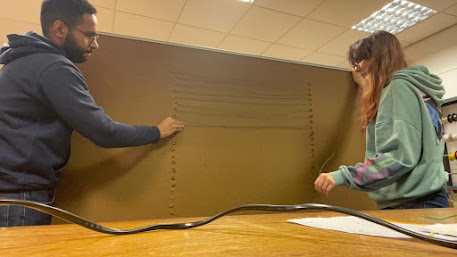Week 2
During this week, our group met 4 times, attending two lab sessions. In the lab sessions, we glued all the LEDs to the backboard and began using wires to connect each LED strips’ data input and output. The connections were done by soldering wires to each strips’ data input/output points.
We also started to work on the software of our project, setting up the Raspberry Pi and testing the Pi camera and LEDs. To test the Pi camera, the PiCamera library was imported into the code and used to preview the camera and take pictures and videos.
During the testing of the LED strips, we encountered a few problems. In order for the LEDs to be controlled by the code, the Neopixel library had to be downloaded, which required an internet connection. This was an issue because the Raspberry Pi was unable to connect to the University WIFI. To counter this issue, we used a phone hotspot to connect to the internet while downloading the Neopixel library. After successfully installing the library, we attempted to light up the LEDs with some python code, but encountered an error as the code for the LEDs had to be run as a root. To fix this issue, we were able to alter the way the python IDE was launched, adding sudo to the beginning of the code, launching the IDE as a root. After that was done, the code for the LEDs worked, and we were able to test their functionality.
We also made sure to test whether there was any light leakage into the camera from the LEDs when they were used simultaneously, just in case this effected the picture quality of the camera. We determined that there was little to no light leakage.
Next week’s plans are:
1) Finish soldering the data wires in series and the 5V and ground connections of the LEDs in parallel.
2) Connect the power supply to the LEDs.
3) Write the code for the image processing and LED control.








Comments
Post a Comment